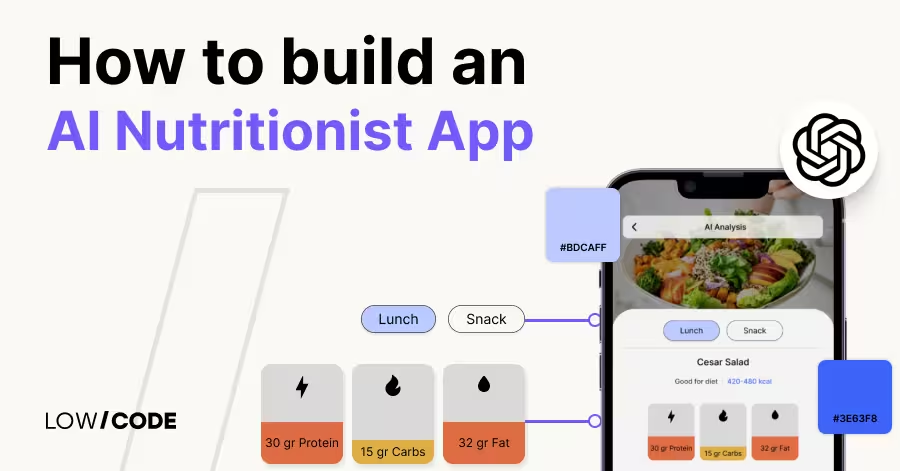How to Build an AI Fitness App (Proven Steps 2025)
35 min
read
Learn how to build an AI-powered fitness app with personalized workouts, real-time feedback, and smart tracking. Explore features, no-code tools, cost, and trends
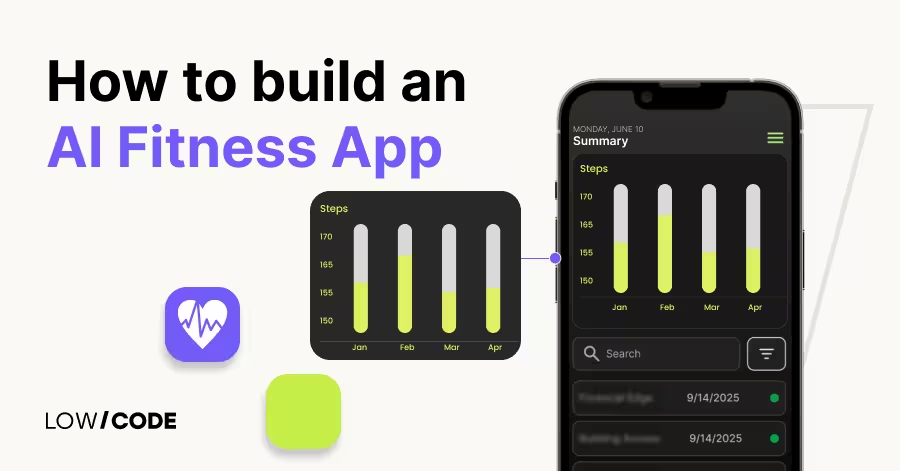
What Is an AI Fitness App?
AI fitness apps use artificial intelligence to create smart, personalized workouts and health advice. Unlike traditional fitness apps that give the same plan to everyone, AI-powered apps learn from your habits, progress, and feedback. They adjust your workouts and diet plans based on real-time data.
Here’s how they stand out from regular fitness apps:
- Personalized Workouts: AI studies your body type, activity level, and goals to suggest the best routines.
- Real-Time Feedback: Some apps use motion tracking or camera input to correct your form during workouts.
- Smart Scheduling: AI adjusts your workout days and rest times if you miss a session or feel tired.
- Health Insights: It can analyze your sleep, heart rate, or steps from smart devices to improve your plan.
This makes AI fitness apps more helpful and flexible than regular ones, especially if you want a trainer-like experience without hiring one.
Read more | AI Business Trends and Challenges
Why Build an AI-Powered Fitness App?
The fitness app market is experiencing explosive growth, but users are increasingly demanding more than basic tracking features. They want intelligent, personalized experiences that adapt to their unique needs and deliver real results.
Building an AI-powered fitness app positions you at the forefront of this evolution.
Benefits for Users:
- Personalized coaching at scale: AI creates custom workout plans based on individual fitness levels, goals, and preferences, delivering the personal trainer experience without the premium price tag.
- Adaptive motivation systems: Smart algorithms identify when users need encouragement, adjust difficulty levels to prevent frustration, and celebrate achievements in ways that resonate with each person's personality.
- Data-driven results: AI analyzes performance patterns, predicts optimal workout times, and suggests modifications that lead to faster, more sustainable fitness outcomes.
- Intelligent injury prevention: Machine learning detects form issues, overtraining signals, and fatigue patterns to keep users safe and healthy throughout their fitness journey.
Benefits for Businesses:
- Scalable personalization: Serve thousands of users with individualized experiences without hiring an army of personal trainers, dramatically improving your unit economics.
- Enhanced user engagement: AI-powered features keep users actively participating longer, reducing churn rates and increasing lifetime value through smarter retention strategies.
- Competitive differentiation: Stand out in a crowded market by offering genuinely intelligent features that competitors with basic apps simply can't match.
- Revenue optimization: AI can identify the perfect moments to introduce premium features, suggest relevant products, and personalize pricing strategies for maximum conversion.
Read more | AI App Development Guide
Types of AI Fitness Apps You Can Build
The AI fitness space offers multiple opportunities to create specialized solutions that address specific user needs. Each type serves different market segments and can be developed with varying complexity levels depending on your target audience and business goals.
1. Workout and Training Apps
AI-powered workout apps create personalized exercise routines based on your fitness level, available equipment, and time constraints. These apps analyze your performance data to adjust intensity, suggest form corrections, and prevent plateaus.
Smart features include real-time rep counting using computer vision, automatic weight progression recommendations, and adaptive rest periods. The AI learns from your workout history to predict optimal training schedules and can even modify exercises based on detected fatigue or injury risk.
2. Nutrition and Meal Planners
These apps use AI to create customized meal plans that align with your dietary preferences, fitness goals, and lifestyle. Machine learning algorithms analyze your eating patterns, nutritional needs, and food preferences to suggest optimal meal combinations.
Advanced features include barcode scanning for instant nutrition tracking, recipe modifications based on available ingredients, and smart grocery list generation. The AI continuously refines recommendations based on your feedback and progress toward health goals.
Read more | AI Contract Management
3. Wellness and Mental Health Trackers
AI wellness apps monitor your overall health by analyzing sleep patterns, stress levels, and mood indicators to provide holistic wellness guidance. These platforms use data from wearables and user inputs to detect patterns and suggest interventions.
Smart features include personalized meditation recommendations, stress prediction algorithms, and sleep optimization strategies.
The AI can identify early warning signs of burnout or mental health concerns and suggest appropriate resources or professional support when needed.
4. All-in-One Fitness Coaching Platforms
Comprehensive AI fitness platforms combine workouts, nutrition, and wellness into a single intelligent ecosystem that provides complete lifestyle coaching. These apps create interconnected experiences where your workout performance influences nutrition recommendations, and sleep quality affects exercise intensity.
Advanced AI coordinates all health aspects to optimize overall results. Features include cross-platform data analysis, integrated coaching across multiple health dimensions, and predictive insights that help users make better long-term health decisions.
Read more | AI-Powered App for Lawyers (No-code)
Must-Have AI Features for Modern Fitness Apps
Creating a competitive AI fitness app requires implementing intelligent features that genuinely enhance the user experience. These AI-powered capabilities transform basic fitness tracking into comprehensive health coaching that adapts to each user's unique needs and preferences.
- Personalized workout planning using AI: Machine learning algorithms analyze user data, preferences, and progress to create custom workout routines that evolve automatically. The AI considers factors like available equipment, time constraints, and fitness level to generate optimal exercise sequences.
- Real-time form correction using computer vision: Advanced AI analyzes user movements through device cameras to provide instant feedback on exercise form. The system detects improper technique and suggests corrections to prevent injuries.
- Virtual personal trainer: AI-powered coaching assistants provide real-time guidance through voice commands, text interactions, or augmented reality overlays. These virtual trainers offer motivation and adapt coaching style based on user personality.
- Calorie tracking and AI meal planning: Smart nutrition features automatically track caloric intake through photo recognition and barcode scanning. AI creates personalized meal plans that align with fitness goals and dietary restrictions.
- Predictive analytics for injury prevention: Machine learning models analyze workout intensity, recovery patterns, and performance metrics to identify injury risks. The AI suggests rest days or exercise modifications to maintain optimal health.
- Smart suggestions based on user behavior: AI algorithms learn from user patterns to provide timely recommendations for workouts and lifestyle adjustments. The system identifies optimal workout times and suggests new exercises based on historical data.
- AI-based wellness tracking: Comprehensive health monitoring uses AI to analyze sleep quality, stress indicators, and recovery metrics. The system provides personalized insights to optimize overall wellness and exercise performance.
- Gamification with AI-driven progress tracking: Intelligent reward systems use AI to create personalized challenges, achievements, and milestones that maintain motivation. The system adapts difficulty levels and celebrates progress in ways that resonate with users.
- Integration with wearables: Seamless connectivity with popular fitness devices, such as Apple Watch and Fitbit, enables comprehensive data collection and analysis. AI processes information from multiple sources to provide holistic health insights.
Read more | AI No-code Inventory Management Tools
Unique Features to Outrank Competitors
Standing out in the crowded fitness app market requires innovative AI features that address real user pain points while creating genuinely differentiated experiences. These advanced capabilities can help your app capture market share and build lasting user loyalty.
- Diversity-aware AI models: Advanced algorithms trained on diverse datasets that recognize different body types, cultural backgrounds, and accessibility needs. The AI adapts exercise recommendations for various physical limitations and fitness starting points to ensure inclusive experiences.
- Adaptive workout difficulty using real-time feedback: Machine learning systems that monitor user performance indicators like heart rate variability and completion rates. The AI automatically adjusts workout intensity mid-session to maintain optimal challenge levels without causing burnout.
- AI-generated motivational content or custom avatars: Personalized coaching content created by AI that matches individual communication styles and motivation triggers. Custom avatar coaches evolve with user progress and provide encouragement tailored to personality types.
- Inclusive design: gender-neutral & accessible UX: AI-powered interface adaptations that accommodate different abilities, vision levels, and motor skills using inclusive language. The system automatically adjusts text size, contrast, and navigation patterns based on accessibility needs.
Read more | Benefits of Glide AI-Powered Apps
Best No-code Platforms to build an AI Fitness App
Building an AI fitness app doesn't require extensive coding knowledge thanks to powerful no-code platforms that offer sophisticated AI integration capabilities.
These platforms provide the tools and flexibility needed to create intelligent fitness applications that can compete with traditionally coded solutions.
1. Bubble
Bubble excels at building complex AI fitness applications with its robust API connector and workflow system that seamlessly integrates with AI services like OpenAI, Google AI, and custom machine learning models. The platform's visual programming approach allows you to create sophisticated data processing workflows for analyzing user fitness patterns, generating personalized workout plans, and implementing predictive analytics.
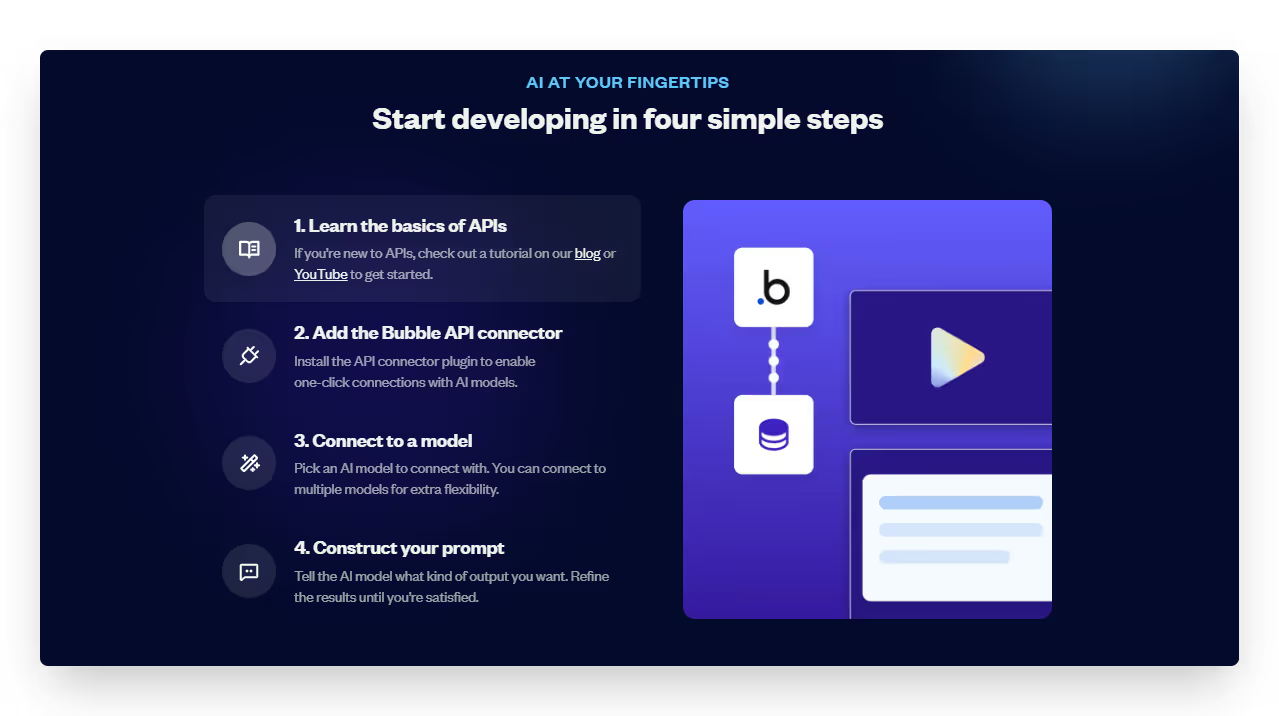
Bubble's flexible database structure handles complex user data relationships while its plugin ecosystem provides ready-made AI integrations. You can build comprehensive fitness platforms with custom AI features, real-time data processing, and scalable architecture that grows with your user base.
Read more | How to hire Bubble developers
2. FlutterFlow
FlutterFlow enables native mobile AI fitness apps with seamless integration capabilities for AI APIs and machine learning services through custom functions and API calls. The platform's visual development environment supports complex AI features like computer vision for form correction, natural language processing for virtual trainers, and predictive analytics for injury prevention.
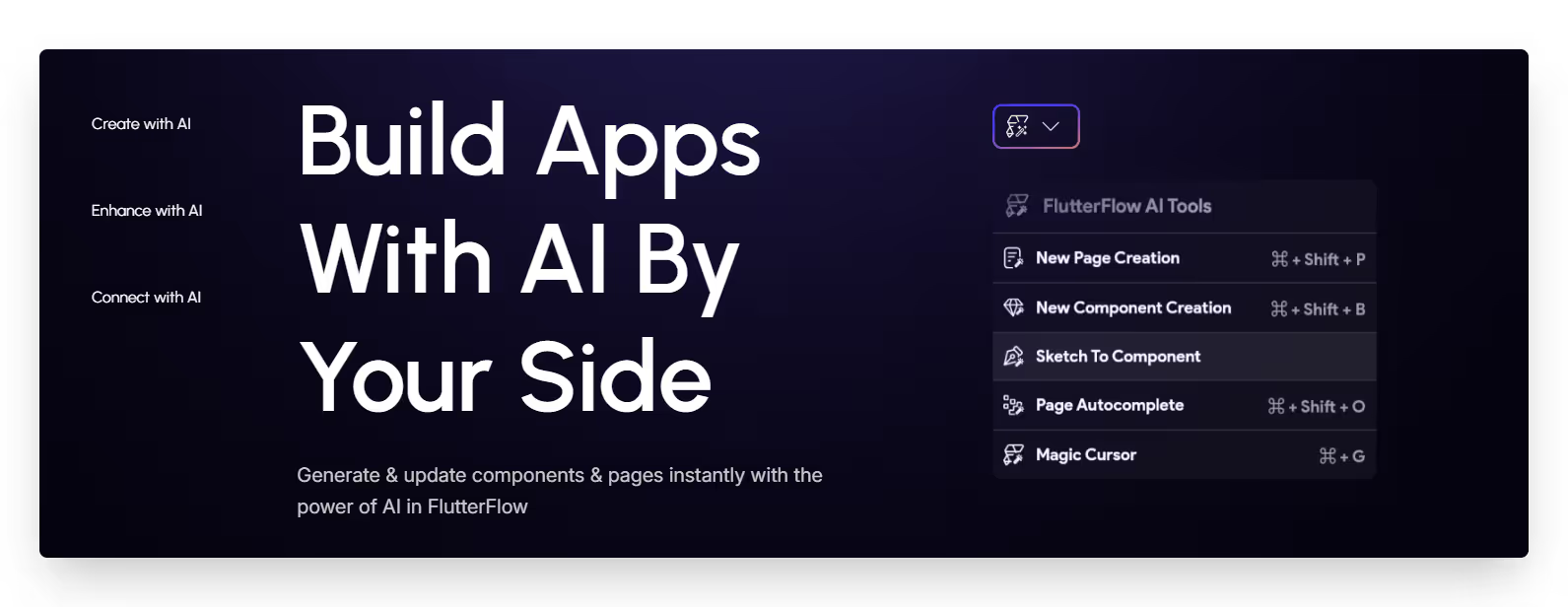
FlutterFlow's real-time database integration allows AI models to process user data instantly while maintaining native mobile performance. You can implement camera-based form analysis, voice-activated coaching, and personalized workout generation while ensuring your app delivers smooth, native experiences across iOS and Android devices.
Read more | How to hire FlutterFlow developers
3. Glide
Glide transforms spreadsheet data into intelligent fitness apps with built-in AI capabilities through integrations with OpenAI and other AI services via custom actions and API connections. The platform's strength lies in rapid prototyping and data-driven AI features like automated workout suggestions, progress analysis, and personalized coaching insights.
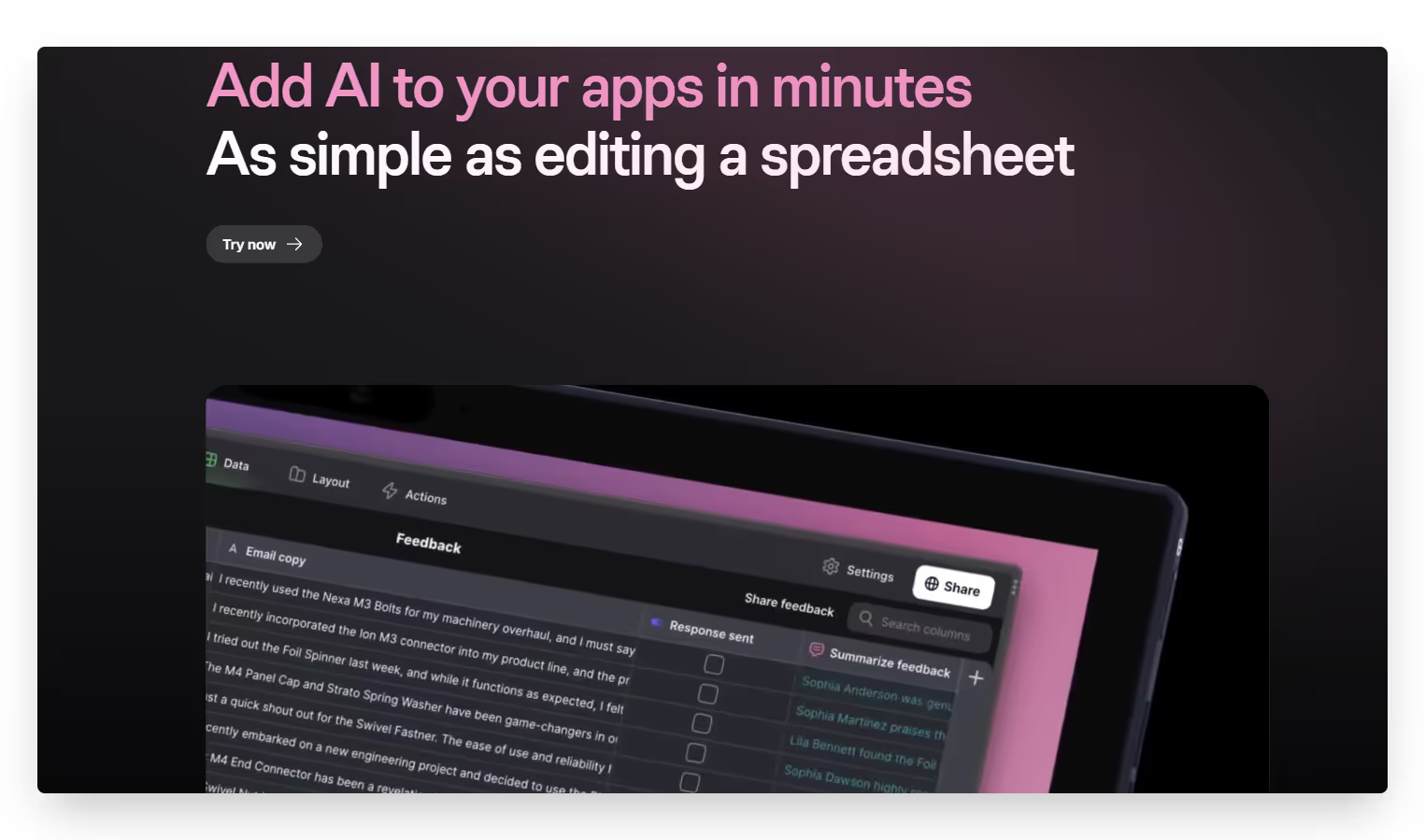
Glide's AI column feature can generate content, analyze user patterns, and provide intelligent recommendations directly within your app's data structure. Perfect for fitness coaches and small businesses wanting to quickly deploy AI-powered fitness tools with minimal technical complexity while maintaining powerful personalization features.
Read more | Glide AI Features in Action
Development Process for an AI Fitness App
Building a successful AI fitness app requires a structured approach that balances user needs with technical capabilities.
Following a proven development process ensures your app delivers genuine value while avoiding common pitfalls that derail fitness app projects.
1. Market research & user persona creation
Start by analyzing existing fitness apps to identify gaps in AI-powered features and understand user pain points through surveys, interviews, and competitor analysis. Create detailed user personas that include fitness goals, technology comfort levels, preferred workout styles, and motivation triggers to guide your AI feature development.
Research specific demographics like age groups, fitness experience levels, and device preferences to ensure your AI algorithms address real user needs.
This foundation helps you prioritize which AI features will deliver the most value and differentiate your app from generic fitness solutions in the marketplace.
Read more | How to build an AI agent in Slack
2. Choose the right No-code platform
Evaluate no-code platforms based on your app's specific AI requirements, target devices, and scalability needs to ensure long-term success. Consider factors like AI integration capabilities, database flexibility, user interface design tools, and deployment options across mobile and web platforms.
Bubble excels for complex web-based fitness dashboards, FlutterFlow delivers native mobile experiences with AI features, while Glide provides rapid prototyping for data-driven fitness tools.
Your choice should align with your technical team's expertise, budget constraints, and the complexity of AI features you plan to implement throughout your app's evolution.
Read more | Best no-code AI app builders
3. Choose the best Technology Partners
Look for no-code development agencies that understand both the fitness space and how to integrate AI features using tools like Bubble, Glide, or FlutterFlow. A good partner will help your app run smoothly, scale with more users, and meet the performance expectations of today’s fitness app users.
At LowCode Agency, we go beyond just building apps. We design smart, scalable digital products that solve real fitness challenges. From strategy to design to development, we make sure your app is AI-ready, built to last, and not just focused on a quick launch. Whether it’s workout tracking, smart meal plans, or wellness support, we help you build a product that delivers lasting value to your users.
Read more | LowCode Agency Case Studies
4. Building your MVP
Focus on core AI features that solve primary user problems: personalized workout generation, basic progress tracking, and simple recommendation algorithms that demonstrate clear value.
Implement fundamental functionality like user onboarding, workout logging, basic AI-powered suggestions, and essential integrations with fitness devices or apps.
Avoid feature creep by prioritizing AI capabilities that directly impact user fitness outcomes rather than flashy but unnecessary features. Your MVP should prove that AI enhances the fitness experience while providing a stable foundation for more advanced features like computer vision, predictive analytics, and comprehensive wellness tracking in future iterations.
Read more | How to choose MVP features
5. Testing AI features
Implement comprehensive testing protocols for AI accuracy by comparing algorithm recommendations against fitness expert advice and real user outcomes. Create feedback mechanisms that allow users to rate AI suggestions, report inaccuracies, and provide input that improves algorithm performance over time.
Test AI features across diverse user groups to ensure recommendations work effectively for different fitness levels, body types, and goal preferences.
Establish metrics for measuring AI feature effectiveness like user engagement rates, goal achievement, and satisfaction scores to continuously refine your machine learning models and enhance the personalized experience.
Read more | Healthcare MVP guide
6. Deployment, analytics, and Feature expansion
Deploy your app with robust analytics systems that track both traditional app metrics and AI-specific performance indicators like recommendation accuracy and user interaction patterns. Monitor AI feature usage, user feedback quality, and algorithm performance to identify areas for improvement and expansion opportunities.
Plan feature expansion based on user data insights, focusing on AI capabilities that show the highest engagement and effectiveness rates. Implement A/B testing for new AI features, maintain regular algorithm updates based on growing datasets, and scale your infrastructure to handle increased computational demands as your user base grows.
Read more | Mobile app MVP development guide
Cost of AI Fitness App Development
The cost of building an AI fitness app depends on your features, platform, and how advanced your AI is. Whether you’re starting with a basic MVP or aiming for a full-scale app, understanding the cost drivers helps you plan better.
MVP vs Full Version
An MVP (Minimum Viable Product) usually costs around $30,000 and takes 8–12 weeks to build. It includes key features like user profiles, workout plans, and basic AI suggestions. This version is great for testing your idea in the market without spending too much.
A full-featured app, with tools like real-time form correction, predictive analytics, and full nutrition tracking, can cost $40,000 to $50,000+. These apps use advanced algorithms, multiple AI models, and strong data processing to deliver a smart, personalized experience.
The main cost factors include:
- AI Complexity: Simple AI (like workout suggestions) costs less than advanced features like computer vision or predictive analytics.
- Integrations: Connecting with wearables, nutrition databases, or payments adds cost and development time.
- Platform Support: Apps for both iOS, Android, and web will cost more. But with Bubble, Glide, or FlutterFlow, you can build cross-platform apps faster and at a lower cost than traditional development.
Cost Comparison: Traditional vs No-code Development
Read more | Bubble Pricing Plans
Time Required to Build AI Fitness App
The timeline for building an AI fitness app varies significantly based on feature complexity, AI integration depth, and development approach. With no-code platforms and experienced development teams, you can launch a functional AI fitness app much faster than with traditional development methods.
Development Timeline Overview
- MVP Development: 8-12 weeks for a basic AI fitness app with core features like personalized workout plans, simple progress tracking, and basic AI recommendations. This timeline includes essential functionality that validates your concept and attracts early users.
- Full-Featured App: 12-16 weeks for comprehensive AI fitness platforms with advanced features like computer vision form analysis, predictive health insights, complex nutrition planning, and multiple AI integrations. This timeline accommodates sophisticated algorithms and extensive testing.
- Enterprise-Level Platform: 20-24 weeks for complex fitness ecosystems with multiple user roles, advanced analytics, custom AI models, and enterprise integrations. These projects require extensive planning, custom development, and comprehensive testing phases.
Our Collaborative Partnership Process
- Stage 1 - Strategic Foundation: We partner with you to understand your vision and business goals, not just technical requirements. Together, we define success metrics specific to your fitness market, map user journeys that drive engagement, and plan AI features that solve real problems. This collaborative approach ensures we're building a solution that aligns with your long-term strategy, not just delivering an app.
- Stage 2 - Visual Framework: As your design partners, we create user experiences that reflect your brand and user needs. We work together to design AI interactions that feel natural, create interfaces that encourage habit formation, and develop visual systems that scale with your business growth. Your insights guide our design decisions to ensure market fit.
- Stage 3 - Solution Building: We become your extended product team, handling technical implementation while keeping you involved in key decisions. Through weekly demos and collaborative feedback sessions, we iterate together to refine AI features, optimize user flows, and ensure the solution exceeds expectations. You stay in control while we handle the complexity.
- Stage 4 - Long-term Partnership: Your success becomes our success through ongoing collaboration. We provide strategic guidance for feature expansion, help identify new AI opportunities as your user base grows, and act as your technology advisors for scaling decisions. This partnership approach ensures your app evolves with market demands and user needs.
Read more | Cross-Platform Mobile App Development Guide
Monetization Models for AI-driven Fitness App
When building an AI fitness app, choosing the right monetization model is important for long-term success. Here are four popular models that work well in the fitness space:
- Subscription Plans
Offer users monthly or yearly subscriptions to access full features like workouts, nutrition plans, and AI tools. This model is ideal when your app provides ongoing value and fresh content. - Freemium with Paid Features
Give users free access to basic features such as workout tracking or progress logs. Then charge for advanced tools like personalized AI coaching, smart meal plans, or detailed analytics. - Personalized Coaching Upsells
Use AI to suggest expert coaching based on user behavior. These sessions can be sold as premium add-ons, giving users a mix of automation and personal support. - Affiliate and E-commerce Integrations
Connect your app with fitness products like smartwatches, supplements, or gear. You can earn revenue through affiliate links or by selling products directly in the app.
With Bubble, Glide, or FlutterFlow, you can build and test these monetization features easily without writing code. This helps you launch faster and adjust based on user feedback.
Read more | Business Mobile App Development Guide
Data Privacy and Security Essentials
Building trust with fitness app users requires implementing robust data protection measures that go beyond basic security protocols.
Health and fitness data represents some of the most sensitive personal information, making privacy and security fundamental to your app's success and legal compliance.
- Handling health data (HIPAA/GDPR): Implement encryption for all health data in transit and at rest, ensuring HIPAA compliance for medical information and GDPR compliance for EU users. Establish clear data retention policies and regular security audits to maintain health data protection standards.
- User consent and permissions: Create transparent opt-in processes explaining data collection, AI usage, and access permissions with granular privacy controls. Provide easy consent withdrawal options and clear explanations of how personal fitness data influences AI recommendations.
- AI transparency and explainability: Ensure users understand how AI algorithms make workout and nutrition recommendations through clear explanations and decision-making transparency. Show users why specific suggestions were made and how their data influences AI processes.
Common Challenges and How to Avoid Them
Even well-intentioned AI fitness apps can fail due to predictable technical and strategic mistakes. Understanding these common pitfalls helps you build a more successful product that delivers genuine value to users while avoiding costly redesigns and user churn.
- Poor AI training: Avoid limited training datasets that produce irrelevant suggestions by implementing continuous learning systems and partnering with fitness professionals to validate AI outputs. Regularly test algorithm accuracy across diverse user groups to ensure safe, relevant recommendations.
- Lack of personalization at scale: Design AI systems that adapt to individual preferences and fitness levels from day one while handling thousands of users. Build scalable personalization engines with feedback loops that continuously refine recommendations for each user.
- Ignoring data bias or privacy issues: Address algorithmic bias by testing AI models across diverse demographics and implementing inclusive training datasets. Establish transparent data practices and ensure AI recommendations don't perpetuate harmful fitness stereotypes or unsafe practices.
Read more | Ecommerce Mobile App Development Guide
Real-World Examples of AI Fitness Apps
These successful AI fitness applications demonstrate the potential of intelligent fitness solutions across different market segments. Each app showcases unique approaches to AI implementation that solve specific user problems while building sustainable business models.
1. Fitbod
Fitbod uses AI to create personalized strength training workouts based on your available equipment, fitness level, and previous workout history.
The app's machine learning algorithms analyze your performance data to automatically adjust weight recommendations, suggest exercise variations, and prevent muscle fatigue through intelligent workout distribution.
With over 1 million downloads, Fitbod proves that AI-powered personalization drives user engagement and retention in the competitive fitness app market.
2. Freeletics
Freeletics combines AI coaching with bodyweight training to deliver personalized workout plans that adapt to user feedback and performance metrics. The app's AI coach analyzes completion times, difficulty ratings, and user preferences to continuously refine workout intensity and exercise selection.
Their freemium model with premium AI coaching features has attracted millions of users worldwide, demonstrating successful monetization of AI-powered fitness guidance.
3. Volt Athletics
Volt Athletics targets serious athletes and fitness enthusiasts with AI-driven periodization and performance optimization features. The platform uses machine learning to analyze training loads, recovery patterns, and performance data to prevent overtraining while maximizing athletic gains. Their B2B2C model serving sports teams and fitness professionals shows how AI fitness apps can succeed in enterprise markets.
4. CloudFit
CloudFit focuses on AI-powered nutrition and wellness tracking that integrates with workout data to provide holistic health recommendations. The app uses computer vision for food logging and machine learning algorithms to suggest meal plans that align with fitness goals and dietary preferences. Their approach demonstrates how AI can bridge the gap between fitness and nutrition for comprehensive health management.
Read more | Best No-code Mobile App Builders
Future Trends in AI Fitness Apps
The fitness app industry continues evolving rapidly as new AI technologies emerge and user expectations for personalized experiences increase. These emerging trends represent significant opportunities for innovative fitness apps to differentiate themselves and capture market share in the coming years.
1. Use of Generative AI for Coaching
Generative AI can now create personalized fitness advice, daily workout routines, and even motivational content. Instead of following a fixed script, the AI adapts to each user's progress and feedback in real time.
This makes the coaching experience feel more human and engaging. With Bubble, Glide, or FlutterFlow, developers can connect generative AI tools like OpenAI to deliver smart, dynamic coaching that changes based on each user's needs, goals, and habits.
2. AI + AR/VR for Immersive Workouts
Combining AI with AR (augmented reality) or VR (virtual reality) creates a fully immersive workout experience. AI tracks movements while AR/VR places the user in virtual gyms, outdoor trails, or group classes.
This makes workouts more fun and realistic. You can use AI APIs with FlutterFlow or Bubble to integrate this kind of experience. It's a growing trend that brings at-home fitness to a whole new level, especially for people looking for motivation and variety.
3. Emotion Tracking with AI
AI can now understand emotions through facial recognition, tone of voice, or daily behavior. Fitness apps use this to adjust workouts, offer motivational tips, or suggest rest when users feel stressed.
For example, a user feeling tired may get a lighter workout and wellness tips. This trend makes fitness apps more thoughtful and user-focused. Using Bubble or Glide, you can connect emotion AI APIs to build apps that respond to how users truly feel.
4. AI-Powered Community Challenges
Community challenges motivate users to stay active and reach their goals together. AI can personalize these challenges based on user levels, preferences, and past activity. It can also track performance, offer rewards, and keep the community engaged.
This makes the app more interactive and fun. With tools like FlutterFlow or Bubble, you can build AI features that manage group challenges, analyze user input, and push smart reminders to keep everyone involved.
Conclusion
Building an AI fitness app has never been more accessible thanks to advanced no-code platforms that democratize sophisticated app development. The combination of AI capabilities and no-code tools creates unprecedented opportunities to enter the thriving fitness technology market without traditional development barriers.
No-code platforms like Bubble, FlutterFlow, and Glide offer powerful AI integrations that rival traditionally coded applications while reducing development time from months to weeks.
You can implement sophisticated features like personalized workout generation and predictive health insights without hiring expensive development teams or learning complex programming languages.
Book a free discovery call with us today to discuss how we can turn your AI fitness app vision into a market-ready product. Let's build something extraordinary together.
Created on
July 21, 2025
. Last updated on
December 5, 2025
.
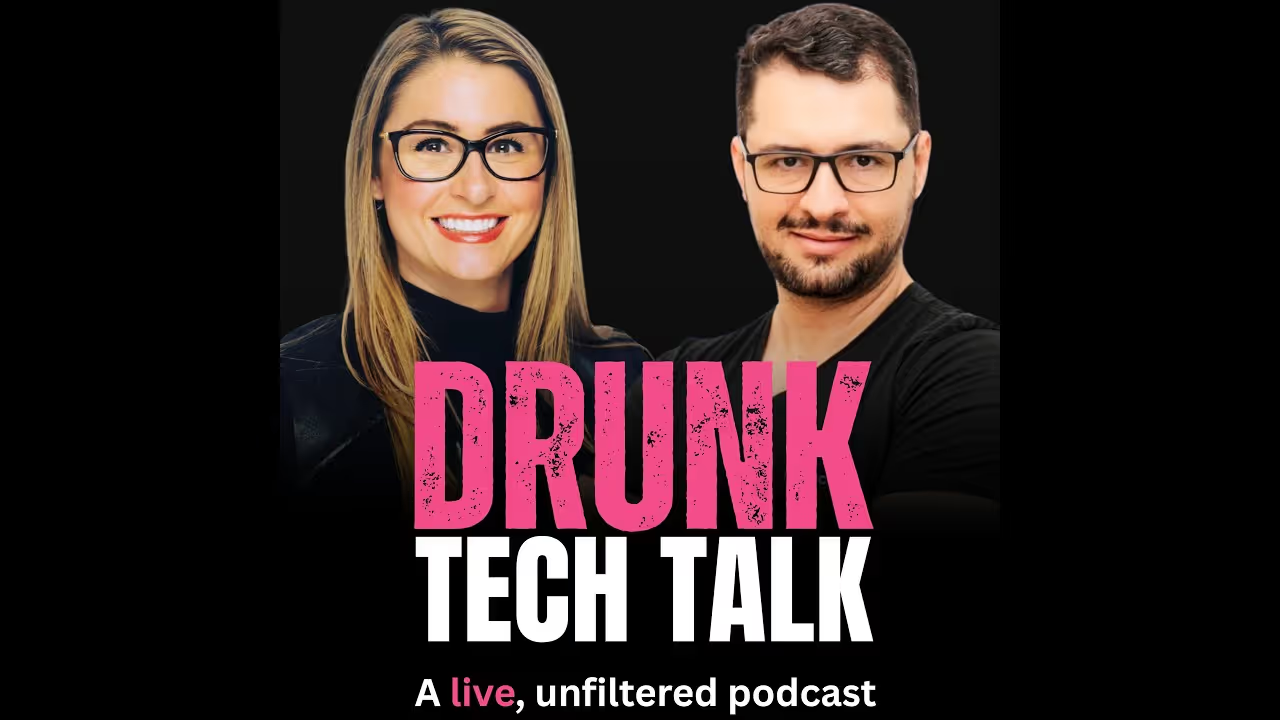
FAQs
What features should an AI fitness app include?
How does AI improve the user experience in fitness apps?
What is the cost of developing an AI-powered fitness app?
Which tech stack is best for building an AI fitness app?
How long does it take to build an AI fitness app from scratch?
Can I integrate AI into an existing fitness app?





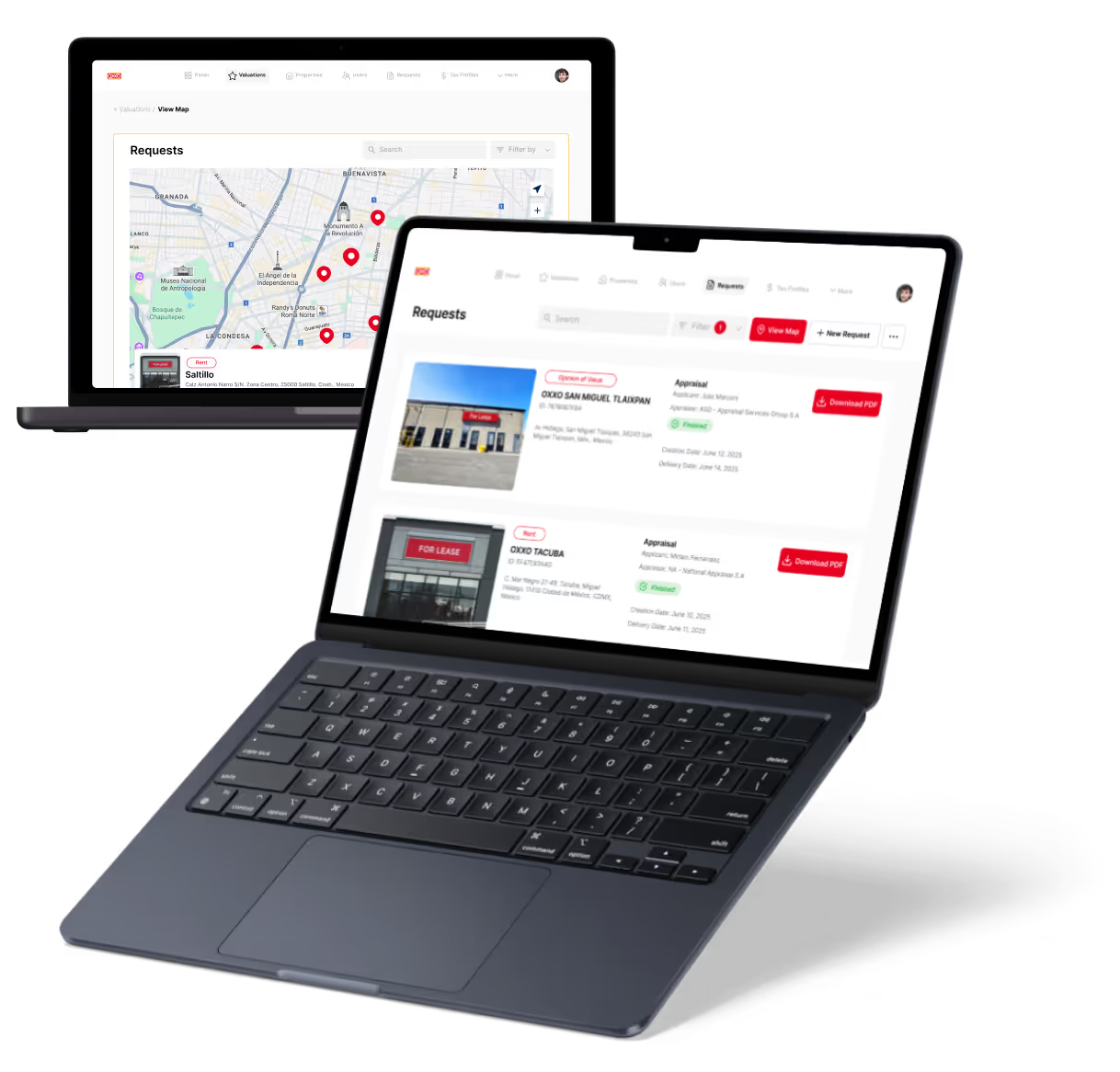

%20(Custom).avif)







